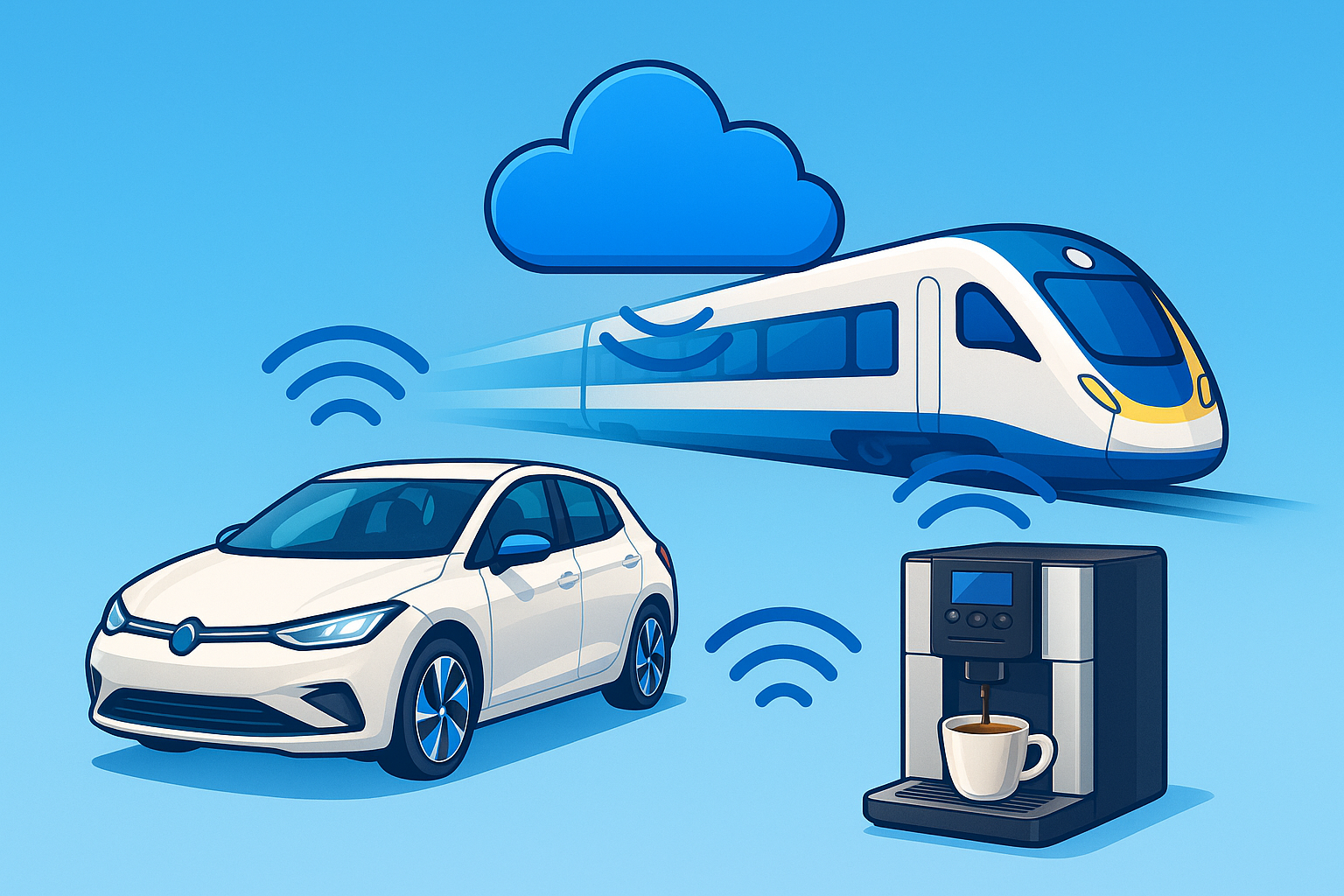“Blue Screens of Death” on public displays amuse me. There’s something oddly entertaining about a railway station departure board throwing a Windows fit or a high street advertising screen stuck waiting for a DHCP lease. It’s the digital equivalent of seeing behind the curtain — a reminder that there’s a PC in there somewhere, doing its best to run the show.
And that’s the thing, isn’t it? It is just a PC. These days, so many of the things we take for granted — the TV, the fridge, the car — are just another node on the network.
Take my car, for instance. I recently renewed the subscription for its connected services. For a modest fee, I can check if it’s locked, see its mileage, locate it on a map, get a journey history for my expense report, and browse a whole range of data that used to stay hidden behind a service technician’s diagnostic port. And it’s not just a luxury add-on — since 2018, EU regulations have required all new cars to include built-in connectivity for emergency calls (eCall), so the hardware is there whether I subscribe or not.
Later in the day, I stood at the station as a train rolled in. Its destination display had gone wrong and cycled through what looked like debug information — including an internal IP address and MAC address. Those probably belonged to the signage system, but I’d bet good money the whole train runs a local network, linking everything from passenger information to onboard diagnostics, and connecting it all back to control centres via mobile data or trackside Wi-Fi.
It made me think: everything really is connected now. Not in the “1990s vision of the Internet of Things” kind of way — more in a quietly omnipresent, of course it’s online sort of way. If it’s powered, it’s probably got a network interface. And if it’s got a network interface, it’s probably talking to something.
There’s real value in that — better data, faster diagnostics, new services, and a smoother user experience. But it comes with risk too: more complexity, more places where things can go wrong, and a bigger attack surface. When my coffee machine has its own app and occasionally needs a reboot, I know we’ve crossed a line.
The future is here. It’s connected. And every now and then, it forgets its IP address.
Featured image: created by ChatGPT
